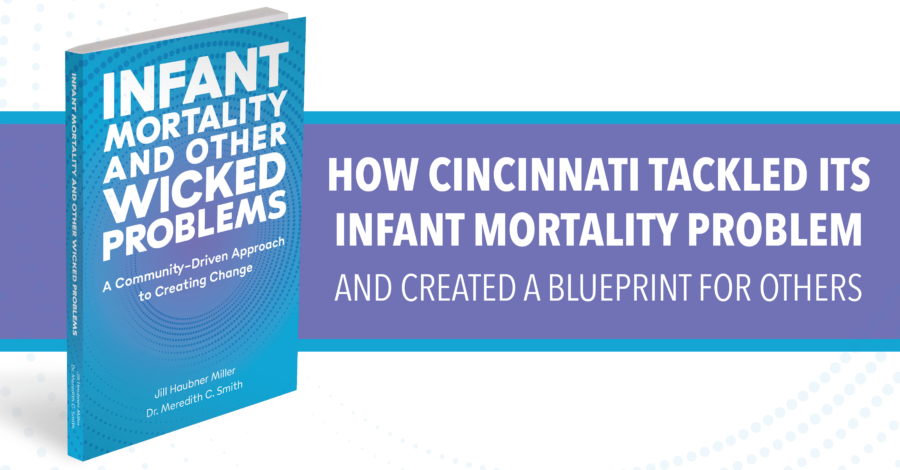

Each September, National Infant Mortality Awareness Month calls attention to a heartbreaking public health crisis: Too many babies in the U.S. don’t live to see their first birthday. The issue is especially dire for Black infants, who continue to die at far higher rates than their white peers.
Fourteen years ago, Hamilton County, Ohio, was a stark example of this crisis, with one of the worst infant mortality rates in the country. For every 1,000 live births, 10.8 babies died in their first year of life. Black babies were three times more likely to die than white infants. It was a “wicked problem”—complex, multilayered, and seemingly unsolvable—that had been lurking beneath the surface for decades.
Today, there’s hope. Hamilton County’s infant mortality rate is on par with the national average. The Black infant mortality rate has been cut in half.
So, what changed? Nearly everything. Healthcare providers, social service agencies, nonprofits, funders, and—most importantly—the community came together to rethink systems from the ground up. For the first time, stakeholders shared data, challenged assumptions, aligned goals, and co-created solutions with mothers and families most affected by the crisis.
The best news? Others can achieve similar results.
“The process we used to tackle our wicked problem isn’t unique to Hamilton County—it’s a flexible framework any community can use to drive systems change,” says Jill Haubner Miller, coauthor along with Dr. Meredith C. Smith of the new book Infant Mortality and Other Wicked Problems: A Community-Driven Approach to Creating Change. “It all comes down to uniting stakeholders around a common goal, drilling down to the root of the problem, and tackling it step by step with an emphasis on building trust, enabling access, and co-designing solutions with those closest to the problem.”
In their book, Miller and Smith describe how Hamilton County made progress by putting the needs of moms and babies at the center, then scaling interventions that worked. Through the lens of their inspiring story, they share lessons and strategies other communities can use to address not just infant mortality, but any wicked problem. Readers will learn:
- How to capture and use data to challenge assumptions, uncover inequities, and identify root causes
- How to connect with stakeholders and unify them around a shared “North Star” goal
- How to build trust and co-create solutions with the people most affected
- How to create a shareable and compelling narrative that helps build your movement
- Strategies for designing replicable, sustainable programs
- The crucial roles of policy advocacy and funding alignment
- …and more
“In the face of major challenges, people can feel powerless,” Miller concludes. “But in Hamilton County alone, our collective efforts have saved over 220 babies and counting. That’s eight classrooms of bright, curious, and valuable children who are with us today because of this work.”
This September, as the nation reflects on infant mortality, Hamilton County’s story serves as a reminder: Change is possible. When communities come together, shift their mindsets, and leverage their resources, we can create healthier futures for all children.

To engage Jill Haubner Miller and Dr. Meredith C. Smith for speaking and break-out sessions, please contact them.